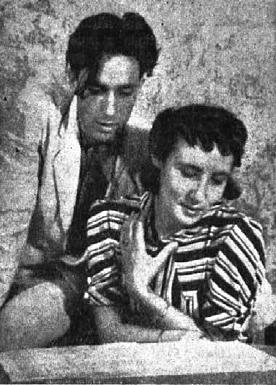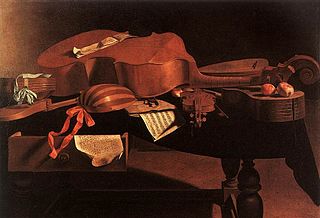A list of notable dancers from Slovenia.
- Stanislava Brezovar [1]
- Pino Mlakar (1907–2006) [2]
- Meta Vidmar [3]
A list of notable dancers from Slovenia.

Don Carlos is an 1867 five-act grand opéra composed by Giuseppe Verdi to a French-language libretto by Joseph Méry and Camille du Locle. Its basis is Friedrich Schiller's play Don Karlos, Infant von Spanien, but it borrows from Eugène Cormon's play Philippe II, Roi d'Espagne, as well. It is often performed in Italian translation, as Don Carlo.

La Scala is a historic opera house in Milan, Italy. The theatre was inaugurated on 3 August 1778 and was originally known as il Nuovo Regio Ducale Teatro alla Scala. The premiere performance was Antonio Salieri's Europa riconosciuta.

Carlos Kleiber was a German-born Austrian conductor, who is widely regarded as among the greatest conductors of all time.

Salome, also known as Salome III, was a Jewish princess, the daughter of Herod II and princess Herodias. She was granddaughter of Herod the Great and stepdaughter of Herod Antipas. She is known from the New Testament, where she is not named, and from an account by Josephus. In the New Testament, the stepdaughter of Herod Antipas demands and receives the head of John the Baptist. According to Josephus, she was first married to her uncle Philip the Tetrarch, after whose death in AD 34 she married her cousin Aristobulus of Chalcis, thus becoming queen of Armenia Minor.

Sadler's Wells Theatre is a London performing arts venue, located in Rosebery Avenue, Islington. The present-day theatre is the sixth on the site. Sadler's Wells grew out of a late 17th-century pleasure garden and was opened as a theatre building in the 1680s.

The Paris Opera Ballet is a French ballet company that is an integral part of the Paris Opera. It is the oldest national ballet company, and many European and international ballet companies can trace their origins to it. It is still regarded as one of the four most prominent ballet companies in the world, together with the Bolshoi Ballet in Moscow, the Mariinsky Ballet in Saint Petersburg and the Royal Ballet in London.

Grand opera is a genre of 19th-century opera generally in four or five acts, characterized by large-scale casts and orchestras. The original productions consisted of spectacular design and stage effects with plots normally based on or around dramatic historic events. The term is particularly applied to certain productions of the Paris Opéra from the late 1820s to around 1860; 'grand opéra' has sometimes been used to denote the Paris Opéra itself.

The Paris Opera is the primary opera and ballet company of France. It was founded in 1669 by Louis XIV as the Académie d'Opéra, and shortly thereafter was placed under the leadership of Jean-Baptiste Lully and officially renamed the Académie Royale de Musique, but continued to be known more simply as the Opéra. Classical ballet as it is known today arose within the Paris Opera as the Paris Opera Ballet and has remained an integral and important part of the company. Currently called the Opéra national de Paris, it mainly produces operas at its modern 2,723-seat theatre Opéra Bastille which opened in 1989, and ballets and some classical operas at the older 1,979-seat Palais Garnier which opened in 1875. Small scale and contemporary works are also staged in the 500-seat Amphitheatre under the Opéra Bastille.

José María Pino Suárez was a lawyer, journalist, newspaper proprietor, and politician who served as the 7th and last Vice President of Mexico from 1911 to 1913, until his assassination alongside President Francisco I. Madero during the Ten Tragic Days, a coup that marked a decisive turning point in the nation's history and solidified his legacy as a martyr of the Mexican Revolution. In addition to the vice presidency, Pino Suárez held several notable political roles, including President of the Senate, Education Secretary, Justice Secretary, and Governor of Yucatán. A staunch advocate for democracy and social justice, he used both his political career and his journalism to champion these causes. For his unwavering dedication to these principles and his ultimate sacrifice, Pino Suárez is considered as a National Hero in Mexico and is affectionately remembered as "El Caballero de la Lealtad".

Pino Mlakar was a Slovenian ballet dancer, choreographer, and teacher. He was born in Novo Mesto.

Stanislava Brezovar, married name Kleiber, was a Slovenian ballerina. She was also known as Stanka Brezovar.

Slovene culture is the culture of the Slovenes, a south Slavic ethnic group. It is incredibly diverse for the country's small size, spanning the southern portion of Central Europe, being the melting pot of Slavic, Germanic and Romance cultures while encompassing parts of the Eastern Alps, the Pannonian Basin, the Balkan Peninsula and the Mediterranean.
Mlakar is a Slovene surname. It is the 8th most common surname in Slovenia. It is equally present throughout the country, and it is especially common in Lower Styria, in Inner Carniola and parts of the Slovenian Littoral.

Baroque music refers to the period or dominant style of Western classical music composed from about 1600 to 1750. The Baroque style followed the Renaissance period, and was followed in turn by the Classical period after a short transition. The Baroque period is divided into three major phases: early, middle, and late. Overlapping in time, they are conventionally dated from 1580 to 1650, from 1630 to 1700, and from 1680 to 1750. Baroque music forms a major portion of the "classical music" canon, and is widely studied, performed, and listened to. The term "baroque" comes from the Portuguese word barroco, meaning "misshapen pearl". The works of Antonio Vivaldi, George Frideric Handel and Johann Sebastian Bach are considered the pinnacle of the Baroque period. Other key composers of the Baroque era include Claudio Monteverdi, Domenico Scarlatti, Alessandro Scarlatti, Alessandro Stradella, Tomaso Albinoni, Johann Pachelbel, Henry Purcell, Georg Philipp Telemann, Jean-Baptiste Lully, Jean-Philippe Rameau, Marc-Antoine Charpentier, Arcangelo Corelli, François Couperin, Johann Hermann Schein, Heinrich Schütz, Samuel Scheidt, Dieterich Buxtehude, Gaspar Sanz, José de Nebra, Antonio Soler, Carlos Seixas, Adam Jarzębski and others, with Giovanni Battista Pergolesi being the most prominent Baroque composer of sacred music.
Sonja Kastl is a Croatian film and stage actress, teacher, dancer and choreographer.
Pino Amenta is an Australian director best known for his work in television. He is the father of actress Jade Amenta.

The Divertimento for Chamber Orchestra after Keyboard Pieces by Couperin, Op. 86 is an orchestral suite composed by Richard Strauss published in 1942 which consists of eight movements, each one based on a selection of pieces from François Couperin's Pièces de Clavecin written for the solo harpsichord over the period 1713 to 1730.

Dušanka Sifnios, also known as Duška Sifnios, was a Serbian ballerina and choreographer, considered one of the most distinguished and internationally most successful Serbian ballerinas. The pinnacle of her career was in the 1960s, achieved through her work with Maurice Béjart when she was one of the most popular ballerinas in the world.
Maria Anna Trancart, was a French-German ballerina. She was one of the more famous ballerinas of her time period; she was one of the first ballerinas engaged at the Burgtheater, where she performed in its inauguration in 1748. She had also performed in Stuttgart and the court theatre in Bavaria.